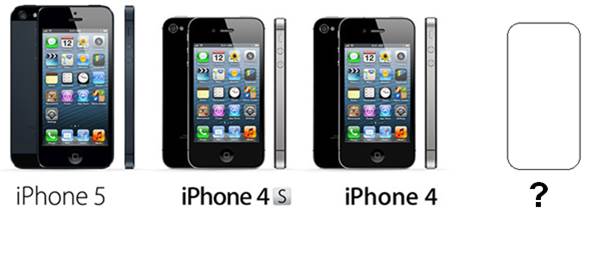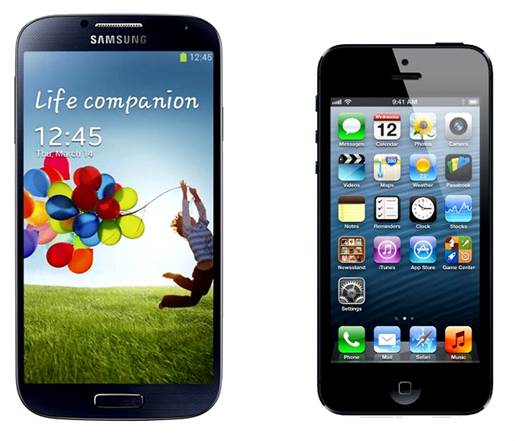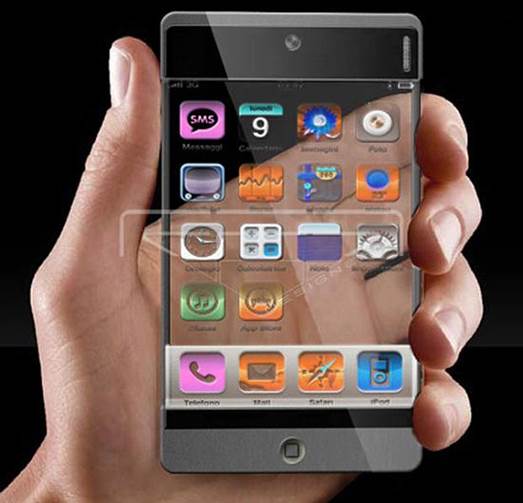The world doesn’t want a bigger,
better phone. It wants one it can afford
Samsung launched the latest version of its
flagship smartphone, the Galaxy s4, in March. In stark contrast to its main
rival, Apple, the Korean company trailed the launch for days before the event,
publishing teaser videos on You Tube, and the launch itself was staged in New
York’s glitzy Radio City Music Hall. Samsung hired a full orchestra to play at
the theatre during the event, and commissioned Broadway veteran Jeff Calhoun to
direct it.
The whole show was broadcast live on
YouTube and to big screens in Times Square – but was heavily criticized for its
portrayal of women. One journalist, CNET’s Molly Wood, described it as
‘tone-deaf and shockingly sexist’. Another, ABC’s Joanna S, said: ‘Sadly, it
isn’t really shocking to me – I was more shocked by the lack of working
wireless at the event. I guess that tells you a bit about how tech companies
continue to think about marketing to women’.

Next
step: Apple offers earlier iPhone models at lower prices, but designing a new,
cheaper iPhone could make sense
Where Apple stages relatively low-key
launches and relies on bloggers and the press to generate buzz, Samsung was
determined to make sure no-one would be able to ignore the S4, whether they
wanted to or not
Perhaps that was because the company knew
the phone itself, whose every feature had been leaked beforehand, lacked the
wow factor necessary to generate the headlines it wanted. The only unknown
feature unveiled at the launch was that the S4 can be used while wearing
gloves.
Early reviews were hardly encouraging. ‘If
you’re looking for Samsung’s new Galaxy S4 to define a novel new era of
smartphone greatness, it’s time to temper your expectations’, said CNET, which
described it as ‘a firm stride forward rather than a giant leap’.
In a nutshell, the S4 seems to be almost
the same as its predecessor, the S3, except that it has a slightly larger
screen, is more powerful, and adds one new feature that’s nice to have but
doesn’t feel essential. It’s exactly the kind of upgrade that, if Apple were to
launch it as the iPhone 6, would attract the kind of doom-laden headlines with
which the company has become all too familiar of late. Apple can now consoled
itself that it shouldn’t take too much effort to offer a more compelling
upgrade with the iPhone 6 later this year.
The real issue isn’t whether the Galaxy S4
is better than iPhone 5 (or 6), but how many more of these top-end models any
maker can shift. Flagship phones, while important for their manufacturers in
the same way as luxury cars are for car their makers, are decreasing in
relevance. Worldwide, few people can afford to pay $750 up front or the monthly
contract equivalent for a mobile. It’s easy to forget, when we see the sheer
number of iPhones and Galaxy in use in the UK, that the biggest growth for smartphones
is taking place in Asia, where the cost of either is completely prohibitive to
most people.

The
real issue isn’t whether the Galaxy S4 is better than iPhone 5 (or 6), but how
many more of these top-end models any maker can shift
The real issue isn’t whether
Samsung’s or Apple’s flagship phone is better. Both are losing relevance
So-called ‘feature phones’ still outnumber
smartphones in Southeast Asia, but that’s changing rapidly. Smartphone sales
are growing more than 50% per annum in much of the region. But it’s not the
likes of the iPhone 5 or Galaxy S3 that are driving that surge in demand. The
real action in the smartphone market is taking place at the other end of the
price scale – hence Apple’s inability to make enough of the two-and-a-half year-old
iPhone 4, which it still sells as a lower-cost option, to meet demand.
Gerald Tan of market research firm Gfk
talked last year about the prospect of cheaper smartphones. ‘Priced below $100,
device[s] will be within the reach of an even larger pool of consumers’, he
said. ‘This move is likely to significantly expedite the demand surge for
smartphones in the region’s yet to be converted feature phone user population,
[in] which we expect to see continued robust growth for at least the next two
years’.
Based in South Korea, Samsung has an
obvious advantage over Apple in the region. And it’s not the only local company
to prosper. Lenovo, Huawei and ZTE are all seeing growth in smartphone sales.
Together, those manufacturers are making Android the dominant operating system
in the world’s most significant growth market for smartphones. That’s something
Samsung’s partners have been quick to focus on.
A story on the BBC website in March opened
with the line ‘Technology giant Apple perceived as less “inspiring” than it was
three years ago, a brand survey suggests’. That survey was conducted by
consultancy Added Value, a subsidiary of advertising firm WPP – whose clients
include Samsung. While its impartiality must be doubted, it does suggest that
Samsung is beginning to inspire the kind of loyalty among customers for which
Apple is famed.
What will Apple do to keep up in Southeast
Asia? It’s already opening retail stores in China at a rate of knots, and seems
keen to negotiate a deal with China Mobile, the world’s largest carrier, to
sell the iPhone. But that alone won’t see it make the most of the possibilities
in emerging markets. One option would be a less-expensive iPhone: a separate
model, rather than a discounted legacy design. And that may be on the cards.

The
low-end iPhone will have the same 4in form factor as the iPhone 5, but a
plastic casing and no Retina display
According to AppleInsider, Amit Daryanani
of RBC Capital Markets has told clients that he expects a cheaper iPhone in the
summer. ‘The low-end iPhone will have the same 4in form factor as the iPhone 5,
but a plastic casing and no Retina display’, he said, apple-focused Piper
Jaffray analyst Gene Munster also told his clients, in a note seen by MacUser,
that he expected ‘a cheaper iPhone in September’.
While making a cheaper version of a
flagship product would be unusual for Apple, it wouldn’t be unique. And given
the way that worldwide smartphone market is moving, it might just be essential.